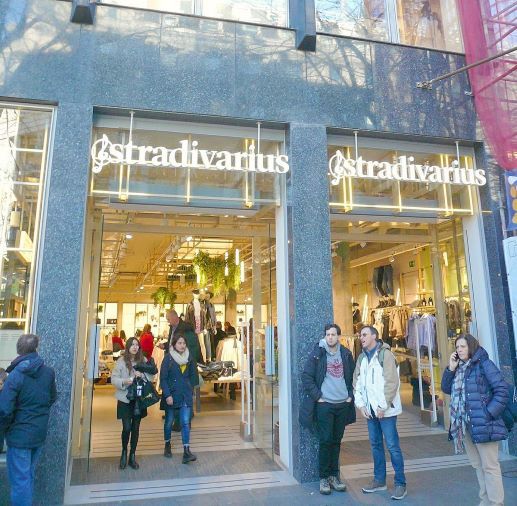Have you ever come across wild fruits that look like apples but are too tiny to be apples? Well, chances are you have come across one of the many varieties of crab apples. With huge trees covered with gorgeous flowers in the spring and summer, the crab apple trees make for a beautiful addition to your backyard garden. But are they just good aesthetically or you can eat the fruits of the crab apple trees as well? Are they as nutritious and healthy as apples? Read on to know all of these and more.
Fun FactCrabapples are also called “jewels of landscape” as they have pink, red, or white blossoms and remain attractive throughout the year.
In This Article
What Is A Crab Apple?
Crab apple does not refer to a particular species or variety of apples. These usually refer to wild apples that are smaller in size or are underdeveloped. Crab apples, with a few exceptions, are usually sour to taste and make for good jams and jelly preparations. Crab apple trees also vary in their height, color, and taste of fruit as well. Some crab apple trees may not bear any fruit and just produce flowers in the summer season. Let’s explore a few popular varieties of crab apples.
Types Of Crab Apples
While there are so many varieties and hybrids of crab apples, not all of them are edible. Some could just be ornamental and add to the beauty of the tree.
- Dologo
The Dologo variety of crab apple trees can grow up to a height of about 35-feet. These crab apples are mostly ornamental but can also be used in jams and jellies as well. This tree is also one of the most disease-resistant amongst the various crab apple varieties. The tree produces larger crab apple fruits. It flowers into white blooms in the springtime, and the leaves turn a gorgeous yellow during the fall.
- The Whitney Flowering Crab
The Whitney Flowering Crab is a smaller tree that reaches a height up to 16-feet. It produces pink and white flowers during the summers. These beautiful flowers also tend to attract bees and pollinators. This tree produces larger and sweeter apples when compared to other crab apple trees. These crab apples also work well for canning and pickling, as well.
- The Centennial Crab Apple
The Centennial crab apple is a dwarf variety of crab apple tree that reaches only a height of up to 8-feet. This variety of crab apples is also good for eating and makes for good jelly and apple butter preparations as well.
- The Chestnut Crab Apple
The Chestnut crab apple is well suited for colder climates. This variety of crab apple fruits has a sweet nutty flavor and is ideal for baking. The tree looks ornamental with its gorgeous colors in the fall season while it draws bees and pollinators during the summer months.
- The Hopa Flowering Crab
The Hopa Flowering Crab grows up to a height of 25 feet and produces beautiful pink flowers. It tends to be more vulnerable to diseases in comparison to other crab apple varieties.
- The Pink Spires Flowering Crab Apple
The Pink Spires variety of crab apple grows to a height of 15-feet and turns into lovely shades of bronze, orange, red, and marron during the cool fall season. as the weather starts to cool. However, the tree is mostly ornamental with the fruit being inedible.
Did You Know?Crabapple smoke can impart an excellent flavor to smoked food as the fruit gives off a pleasant smell when burned.
Are Crab Apples Edible?
Yes, most crab apple varieties are edible. All these vary in their taste and texture. While some can taste dry and bitter, others could taste sour and tart.
While you can eat most varieties of crab apples, their taste might not be very pleasant when eaten raw. Most taste best when made into jams and jellies.
How To Eat Crab Apples
iStock
If you find a crab apple variety with an agreeable taste, you can eat it just like regular apples. Remember to cut in a way so as to remove the toxic seeds. The seeds in the core of apples contain cyanogenic glycosides, which form the toxin, cyanide (1). While you would need to eat a lot of crab apple seeds for it to be fatal, a little amount of consumption might lead to nausea and stomach upsets.
Now, for all other crab apple varieties which might be tart to taste, you could make them into jams, jellies, pickles, apple sauce, or butter to get the best out of their flavors. Let’s now have a look at what nutrients a raw crab apple provides you with.
Nutritional Profile
According to the USDA, 100g of raw crab apples have the following nutrients (2):
|
Water |
78.9g |
|
Energy |
76 kcal |
|
Protein |
0.4g |
|
Total lipid (fat) |
0.3g |
|
Carbohydrate |
20g |
|
Calcium, Ca |
18mg |
|
Iron, Fe |
0.36mg |
|
Magnesium, Mg |
7mg |
|
Phosphorus, P |
15mg |
|
Potassium, K |
194mg |
|
Sodium, Na |
1mg |
|
Copper, Cu |
0.067mg |
|
Manganese, Mn |
0.115mg |
|
Vitamin C |
8mg |
|
Thiamin |
0.03mg |
|
Vitamin A |
2µg |
Crab apples contain similar nutrients and benefits as regular apples. But, you need to consume a lot of these to match up to the nutritional value of one apple. For instance, while a regular medium-sized apple could be around 3 inches in size, crab apples tend to vary between ¾ th of an inch to 2 inches (3). Therefore, you would need about four crab apples to match up to the benefits of eating one medium apple. Should you have a crab apple tree in your garden? What are the benefits of growing one? Let’s understand further.
Benefits Of Growing Crab Apples
- Rich In Phenolic Compounds With Antioxidant Properties
iStock
Crab apples are a good source of antioxidative phenolic compounds. The pulp of these fruits is especially rich in sugars and polyphenols that are not only responsible for their taste and color but also help get rid of toxic free radicals with their antioxidant activities. Crab apples are richer than apples in their polyphenol content and show good potential for use in the health and skincare industries (4), (5).
SubscribeRelated: 15 Benefits Of Antioxidants And Their Best Sources
- May Have Anticancer Properties
Crab apples, especially the red varieties, are believed to have more antioxidants and anticancer potential than the green varieties. Studies suggest their potential antiproliferative role in inhibiting and restricting the growth and spread of the cancerous cells with their pro-atopic activity. Bioactive compounds derived from crab apple leaves also exhibit anticancer potential on human cancer cell lines (6), (7), (8).
- May Help Lower Cholesterol
iStock
The bioactive components in crab apple fruit extracts might potentially help lower your blood cholesterol levels. While animal studies on obese mice have also confirmed the cholesterol-lowering effects of crab apple fruit extracts, more research is warranted to establish the same for humans (9), (10).
Related: Cholesterol Ratio Calculator
- Help In Pollination
Most crab apple trees bloom into gorgeous pink or white flowers during the summertime. These not only make your garden look beautiful but also help attract bees and birds. They help pollinate the other plants in your garden.
Did You Know?Crabapples are used as pollinizers especially in apple orchards. They are planted after every 6-7 trees. Sometimes, even their limbs are grafted on some plants.
Well, as we see, crab apples can be similar to regular apples in their benefits and uses, but are there any risk factors? Let’s find out.
Related: 8 Surprising Health Benefits Of Eating An Apple Every Day
Precautions And Risks
Crab apples, being tiny versions of apples, might resemble some other wild fruits as well. You must be sure what you have is a crab apple and not some dangerous fruit, before taking the fateful bite. Once you are sure, you must be careful about avoiding the seeds and core while eating the fruits.
Though the seeds contain cyanogenic glycoside, the precursor to the poisonous cyanide, it would take a lot of seeds to make you sick. Still, you must make sure to avoid them to prevent any unnecessary reactions.
You should also make sure that your pets or other animals don’t feed on these. As you cannot be sure of the quantity they consume and that might lead to potential poisoning.
Having said that, let’s understand the best practices to harvest and store these tiny apples to help you make the most out of them.
Harvesting And Storage
Just like the regular full-sized apple varieties, the crab apple trees also mature around late summer to mid-fall. Since these grow in the wild, or even in your backyard, you must be dressed appropriately to prevent mosquito or bug bites while plucking these off the branches. You can collect them in a canvas bag or basket, whatever is convenient for you.
Crab apples tend to bruise easily and could get spoiled within a day or two if not stored properly.
You can have them as soon they are harvested or store them in the fridge to extend their longevity. You can also cook them into a variety of jams, jellies, and sauces and preserve them for a longer time. We have listed two popular recipes below to help you get started.
Crab Apple Recipes
1. Crab Apple Jam
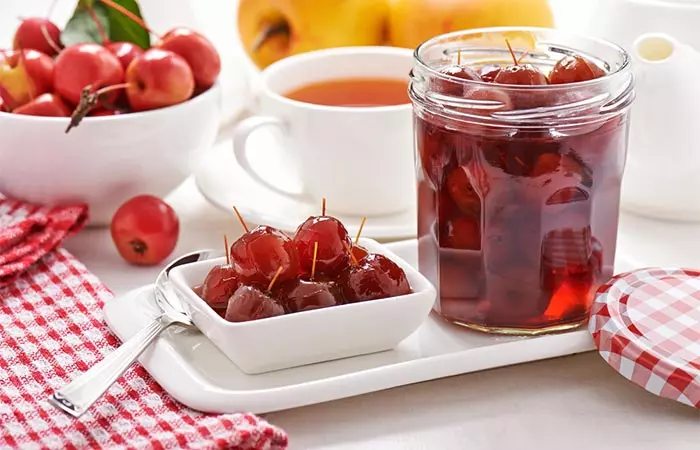
Shutterstock
Ingredients
- Crab apples – 2.2 lbs
- Water- 2 cups
- Cane sugar – 2 ¼ cups
Instructions
1. Wash and clean the crab apples well.
2. Heat 2 cups (473 mL) of water in a large pot and add the crab apples in.
3. Let them simmer until they are soft and mushy, for about 35–40 minutes.
4. Mash the soft apples with an immersion blender.
5. Strain out the pulp through a fine-mesh sieve and remove the seeds and stems.
6. Take about 3 cups (237 mL) of this sieved pulp in a pot.
7. Add in the cane sugar.
8. Add vanilla, ginger, cinnamon, star anise, or any spices you like.
9. Simmer on medium heat for about 30 minutes, stirring frequently to prevent the mixture from sticking to the bottom of the pot.
10. The jam is done when it’s no longer runny.
11. Cool and pour into sterilized jars.
12. Refrigerate for later use.
2. Crab Apple Whiskey

Shutterstock
Ingredients
- Crab apples – 750g
- Whiskey – 70 cl (700 ml)
- Sugar or honey – 5 tablespoons
- Fresh ginger slices – 3
- Cinnamon sticks – 2
Instructions
1. Wash and slice the crab apples into halves
2. Fill them into a 1-liter jar.
3. Pour in the whiskey all over the crab apples.
4. Add the sugar or honey, and the ginger. You may add in a cinnamon stick or a combination of your favorite spices.
5. Once the apples are well covered in whiskey, seal the bottle and set aside.
6. Let the whiskey infuse. The longer, the better.
Ideally, people make it during the fall season when you get ripe crab apples and allow it to infuse until Christmas. You can then have some rich, spiced crab apple whiskey ready for the festive season. You may leave it for up to five years for a more intense infusion.
Key Takeaways
- Crab apples are wild apples that come in different varieties, and not all types are edible.
- You have to eat four wild apples to equal the nutritional value of a medium apple.
- Crab apples have excellent antioxidant, anti-cancer, and cholesterol-lowering properties.
- However, their seeds contain cyanogenic glycosides, and eating them in large numbers can be fatal.
To Sum Up
Crab apples are miniature wild varieties of apples that have not developed completely. While they may not have a sweet flavor as usual apples, they are rich in healthy polyphenols and antioxidants. They usually have beautiful flowers that attract bees and birds in the summer and the leaves add gorgeous colors to your garden during the fall season as well. While few crab apples are purely ornamental and inedible, other varieties can be made into jams and jellies to enjoy their flavor and benefits.
Frequently Asked Questions
Can you make cider from crab apples?
Crab apples do not make good cider but can be used with other apples for more tannin.
Can crab apples be used for anything?
Crab apples are good for cooking. You may use them for desserts like pies, chips, tarts, and prepare jams and jellies.
Sources
Articles on StyleCraze are backed by verified information from peer-reviewed and academic research papers, reputed organizations, research institutions, and medical associations to ensure accuracy and relevance. Read our editorial policy to learn more.
- Cyanides in the environment—analysis—problems and challenges
https://www.ncbi.nlm.nih.gov/labs/pmc/articles/PMC5506515/ - Crabapples raw
https://fdc.nal.usda.gov/fdc-app.html#/food-details/171721/nutrients - Involvement of cell proliferation and cell enlargement in increasing the fruit size of Malus species – ScienceDirect
https://www.sciencedirect.com/science/article/abs/pii/S0304423805000658 - Characterization of phenolics amino acids fatty acids and antioxidant activity in pulp and seeds of high altitude Himalayan crab apple fruits ( Malus baccata)
https://pubmed.ncbi.nlm.nih.gov/29892117/ - Nutrient compositions and functional constituents of 12 crabapple cultivars (Malus Mill. species): Aptitudes for fresh consumption and processing – Yu – – Journal of Food Processing and Preservation – Wiley Online Library
https://ifst.onlinelibrary.wiley.com/doi/abs/10.1111/jfpp.15341 - (PDF) Phenolic Profile Antioxidant Activity and Anti-proliferative Activity of Crabapple Fruits
https://www.researchgate.net/publication/330891414_Phenolic_Profile_Antioxidant_Activity_and_Anti-proliferative_Activity_of_Crabapple_Fruits - Profile and antioxidant activity of phenolic extracts from 10 crabapples (Malus wild species)
https://pubmed.ncbi.nlm.nih.gov/24392851/ - Dihydrochalcone Compounds Isolated from Crabapple Leaves Showed Anticancer Effects on Human Cancer Cell Lines
https://pubmed.ncbi.nlm.nih.gov/26633321/ - Targeted isolation and identification of bioactive compounds lowering cholesterol in the crude extracts of crabapples using UPLC-DAD-MS-SPE/NMR based on pharmacology-guided PLS-DA
https://pubmed.ncbi.nlm.nih.gov/29232626/ - Crabapple fruit extracts lower hypercholesterolemia in high-fat diet-induced obese mice – ScienceDirect
https://www.sciencedirect.com/science/article/abs/pii/S1756464616302936
Was this article helpful?
Related
The following two tabs change content below.
- Reviewer
- Author

Varsha Patnaik
Varsha holds a master’s degree in biotechnology from Ravenshaw University, Cuttack, and is a certified diet and nutrition coach. She… more
Vandana Gujadhur
(RD & Yoga Expert)Vandana is a registered dietitian with the Dietitians of Canada and part of the Cardiovascular, Obesity and Diabetes networks. She… more



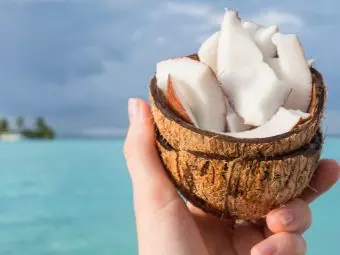 Is Coconut Meat Good For Your Health?
Is Coconut Meat Good For Your Health? 5 Benefits Of MCT Oil And The Best Ways To Use It In A Keto Diet
5 Benefits Of MCT Oil And The Best Ways To Use It In A Keto Diet Winter Melon: Nutrition, Benefits, Side Effects, & Precautions
Winter Melon: Nutrition, Benefits, Side Effects, & Precautions Shiitake Mushrooms: Nutritional Information, Benefits, And Side Effects
Shiitake Mushrooms: Nutritional Information, Benefits, And Side Effects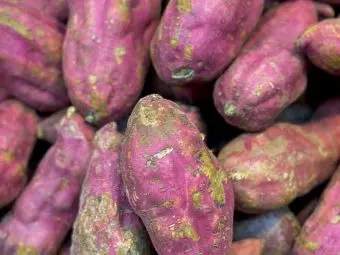 Health Benefits Of Purple Yam You Must Know About
Health Benefits Of Purple Yam You Must Know About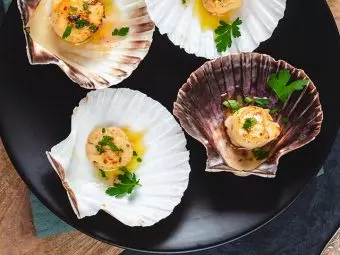 Top 5 Health Benefits Of Scallop And Its Nutrition Facts
Top 5 Health Benefits Of Scallop And Its Nutrition Facts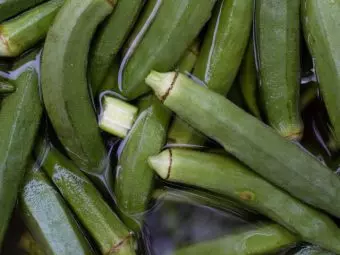 5 Important Health Benefits Of Okra Water Backed By Science
5 Important Health Benefits Of Okra Water Backed By Science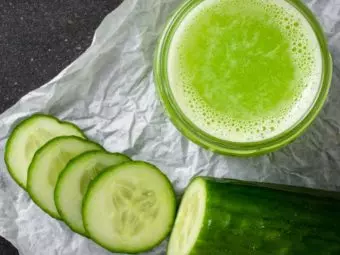 Cucumber Juice: Benefits, Nutrition, And More
Cucumber Juice: Benefits, Nutrition, And More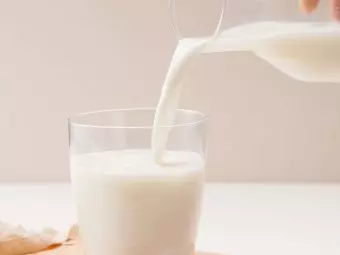 9 Amazing Health Benefits Of Donkey Milk You Need To Know About
9 Amazing Health Benefits Of Donkey Milk You Need To Know About